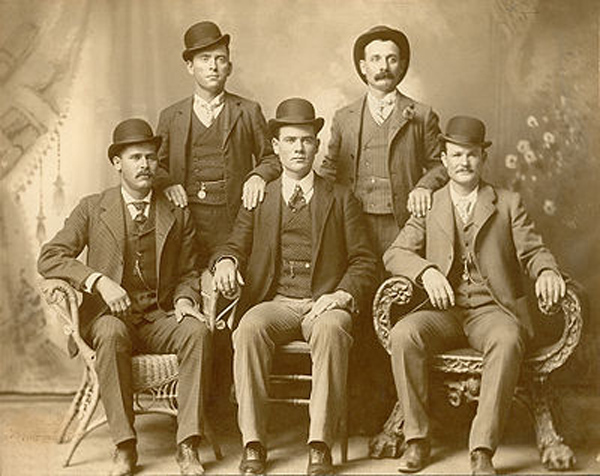 Social Media Is a Game Changer for Churches
Social Media Is a Game Changer for Churches
…and that’s a good thing.
It’s not easy to understand the Social Media Revolution. Everyone is trying to figure out how it applies to them.
Let’s look first at the business world — something everyone interacts with.
Every business covering every life need from cradle to grave is exploring social media. One of the leading speakers on the topics gained his expertise promoting his swimming pool business.
Most businesses know they must have an interactive online presence if they want to stand out.
Most churches are making no effort whatsoever to enter the lives of the people who populate the modern world.
Let’s look at what businesses are learning and apply it to church mission.
At first businesses tried to lure customers by “hanging out” like buddies.
The hoped for benefit was to create loyalty, buzz and awareness of their expertise which would translate to success and dollars.
The reality is that no one is really going to spend a ton of time hanging out with every business they interact with.
If they visit a social media site they probably fit into certain categories.
Churches, look closely at this list and consider how each might apply to church life. It will help you develop a content strategy (mission strategy).
People who engage in Social Media are seekers. They find your website for a personal reason:
- They have a specific question. Something made them think you might have the answer.
- They are curious. Some experience sparked their interest and they want to know more.
- They have a problem that needs to be solved.
- They have a passionate cause and are looking for like-minded people.
- They have had an experience with your product or service (good or bad) and feel a need to share with others.
- Something is missing in their lives. They may not know what it is.
- They stumbled upon your site serendipitously and an interest was sparked.
- They found something entertaining.
If you want readers to make visiting your site a habit you must engage them by meeting one of these needs, especially if you want to engage readers to a point that they take action. That’s what evangelism is all about.
Yes, it is likely to cost some money to find the talent to devote to this. Done correctly it is guaranteed they will work as hard as any pastor, organist or sexton. Online communicators are pivotal to the emerging church.
Relating Social Media to Ministry
Let’s explore each item on the above list.
- They have a specific question—something made them think you might have the answer.
Seekers have questions. If your church regularly provides answers, your site will attract an audience. You could create a one-time Frequently Asked Questions page and let it sit there OR you could regularly engage your audience in finding answers themselves (the better educational technique).
- They are curious. Some experience sparked their interest and they want to know more.
You can provide a service to readers by building links to information in your field. Often this translates into providing a link to the regional body or national church entity. That’s probably not what curious web surfers are looking for.
2×2 regularly provides a collection of art that might supplement a congregation’s understanding of scripture. We provide links to sites that will help them learn more about religious art. This feature is starting to draw some traffic from search engines.
- They have a problem that needs to be solved.
Churches serve individuals. Individuals come with needs and problems. How can your website address this need? It may be a daily spiritual reading. It may be a directory of your members with their skills and experts attached (your own little LinkedIn). Your congregation will become known as more than Sunday morning church-goers. They will be recognized for their skills, talents and willingness to become involved in their communities.
Churches serve communities. Communities have problems. Identify your community’s challenges and address them regularly. Members of your community with an interest in the same problems will find your site.
2×2 found that people are looking for object lessons. We were familiar with a site that catalogs object lessons for children. We found our own niche: object lessons for adult learners. About 600 people per week find our site when they are searching for object lessons for either adults or kids. We fill a need and are opening a relatively unexplored teaching tool for whole congregations. We target the adults but keep the whole congregation in mind with our tips.
Another church found that families with an autistic member felt shut out by society, including the church. They developed a church curriculum to embrace this need.
- They have a passionate cause and are looking for like-minded people.
2×2 has a passion for small church (neighborhood) ministry which is being gulped up by corporate church economics. We write about this topic regularly.
- They have had an experience with your product or service (good or bad) and feel a need to share with others.
Churches love to talk about the good. No problem understanding this need. But dealing with the bad (they like to call it “baggage”) is not their strength. The Church tends to pigeonhole all but the most exuberant emotions.
The standard solution for disgruntled Christians is facilitate their becoming unchurched. The Church is happy that way. They’ve avoided unpleasantness by sacrificing their mission. Forgiveness, reconciliation, etc. are easier to talk about than to engage in.
The Church that is emerging in the Social Media Revolution will have to start handling the whole person. They will no longer be able to avoid the baggage or assign it to short-term scapegoats to deal with. The disgruntled now have a place to go.
Business is learning that it is a big mistake to not work with their critics. Will the Church learn from their experience?
- Something is missing in their lives. They may not know what it is.
People love to share when they are happy and when they are angry. Webmasters love happy people. We figure out how to handle angry people. But there are a lot of lost emotions. People are less willing to share when they are sad and lonely and hurting. But this is when they need other people (the Church) the most.
Here’s an emotional niche the church must fill. Online is a good place to start.
- They stumbled upon your site serendipitously and an interest was sparked.
People talk. Talk leads to questions. Answers to questions these days are frequently found by googling. If you can anticipate questions and provide the answers, curious people will find you.
People looking to expand their experience or interest will find you if you let them know that you have people who share the same interests. Churches already do this when seeking musical talent. What if they put the same interest into finding and nurturing other talents.
Example 1: One church our Ambassadors visited had a passion for serving people dealing with cancer. They developed resources for patients and caregivers and families affected by this decease. They haven’t done this, but if they put those resources online, people would begin to view them as partners on a difficult journey.
Example 2: Another church realized that economic development was important in their community. They offered classes and even small loans to help small businesses. They built a relationship with a nearby business school. The networking could help the church grow—if they are online.
In these examples someone googling “cancer” might find your site. Likewise, someone googling “business education” might find your site.
As Google localizes their algorithms, this will become even more valuable for churches! Local needs will be easier to identify and fill. You will come up online as the answer—if you addressed the need.
Get started! Start answering the first concerns on the list and watch people find your site serendipitously.
- They want to be entertained.
Everyone likes to have fun. Everyone appreciates beauty. Address these basic human qualities online. Post cartoons. Take a poll. Share a video. Ask questions. Engage!
Social Media Is A Game Changer
The Church often views Social Media Ministry as something to be added to what they already do. In fact, the use of Social Media will change everything about how we “do” church as we move into the digital future. There will be less guessing about how to reach people. You will know your community better and you will be prepared to serve your community better.
Social Media will guide your ministry. But only if you are online!




